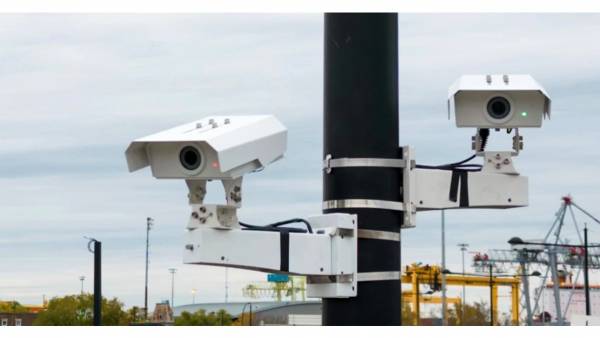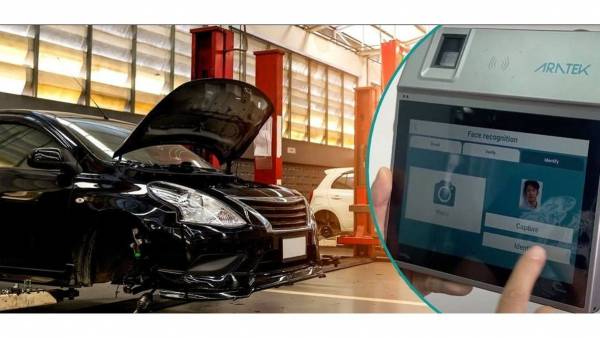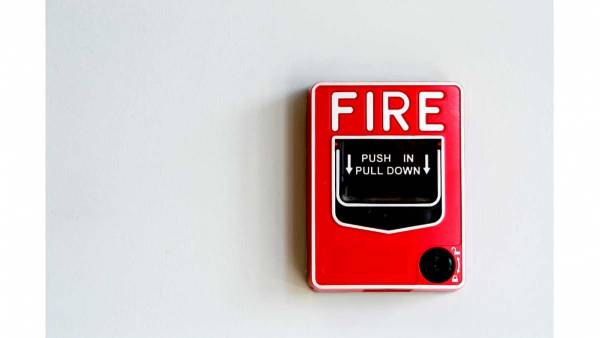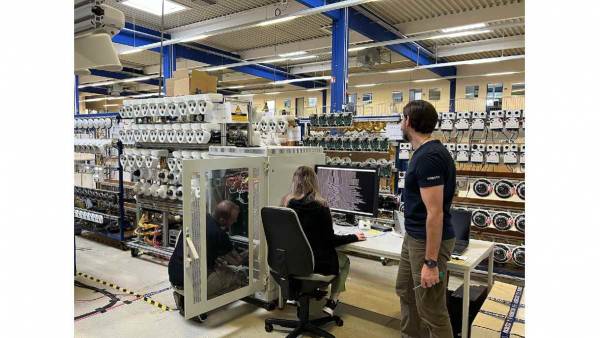 For security professionals it will always be a duty to work hand in hand with the IT department, since their work is complementary and requires mutual commitment.
For security professionals it will always be a duty to work hand in hand with the IT department, since their work is complementary and requires mutual commitment.
by Adolph Salas*
Anyone who is part of the surveillance systems will be working more and more hand in hand with the IT department. For example, more than 75% of integrators report spending more and more time with IT staff than they were last year. In fact, 29% of them report spending considerably more time with staff in this department. If that's what integrators say, you can already imagine the impact that computing has had on end users. Why do we bring this topic up?
The ability to make use of a networked infrastructure is one of the main advantages of an IP surveillance system. Corporate networks generally offer adequate bandwidth, switching, and router. However, do not think that it is enough to circulate surveillance data over the computer network to avoid possible problems. And remember, especially if you are using high-resolution cameras, the lack of bandwidth will result in unsatisfactory images for the security department.
Below we will explain the real problem. Those who manage information technology don't always understand the real impact video has on their network. Your most important concern is that the video overloads the network.
However, the reality is different. If the network is properly configured, most corporate networks will have no problem handling the video. The problem is the WAN when streaming video between buildings. This is when it becomes very important that both security and IT personnel are looking to the same side. Working together they can design a better solution.
However, security management seems divided. Some security executives welcome the IT department's involvement and ownership of various parts of a video surveillance system, while others find it convenient to own most of the gear. That's what you have to decide.
Whatever your decision, start by making it your ally. Don't get caught up in a turf war with them. The network is theirs and they will gladly share it if you include them from the beginning, if you consult their opinion and ask for recommendations, if you make them participants in the approval processes and give them the necessary control. Sit down with your integrator and IT representative to determine how your video network will be deployed and who will own and be responsible for which parts of the project during installation and after.
For example, show IT staff how locating servers near storage cameras will minimize video transport over the WAN. Keep in mind the concerns of the IT department, it is extremely important that you discuss this topic with them. By calculating the amount of bandwidth and storage you'll need, you can give them an estimate of how much data your security cameras will send over the network.
Fred Zagurski, CPP, CDT, president of Fred Zagurski Consultants of Edmonds, Washington, recommends creating a separate security LAN that supports intrusion protection alarms, access control, video surveillance, and audio systems (intercom, P/A, mass warnings, among others). This security LAN should be as compatible as possible with existing LAN hardware, such as servers, monitors, UPS (power alternator), central switches, edge switches, PoE (power over Ethernet), injectors, routers, and other equipment and software (operating system).
An important detail is that the security LAN must have a distinctive cable color to differentiate it from the corporate system. All cables, however, must be marked using the company's internal rules. It must also operate at more than 1 GB of bandwidth from the fiber optic backbone to ensure that it provides sufficient bandwidth.
Zagurski also suggests that the UPS be a smart unit that allows operation for a designated period of time (approximately 15 minutes) before starting the disconnection. Zagurski also recommends that the IT department have a one-year warranty to observe the reliability of the security LAN, before deciding whether or not to connect the networks through routers. Finally, both networks must offer the possibility of being disconnected for maintenance without the disconnection of one affecting the other.
What is your current infrastructure?
Will this new video system affect the current infrastructure in any way? Check with the IT staff to determine how much bandwidth they can provide. You may be asked how much you need. Don't skimp on your calculations. Leave room for a potential expansion of the number of users and/or cameras.
IT staff will express concern that putting security video on the company's network could affect the performance of the corporate network. Generally, the priority of the IT department is to ensure uninterrupted operation of email, all the time. What you should be concerned about is that the company's system may make you lose recorded video. Should you share with computing? Or does it make sense to have two separate systems to protect both parts of the company, ensuring that both can meet mission objectives?
Evaluate the network
Can you expect high quality of service and flexibility for network expansion or will you need a secondary network? What is the port capacity like? These questions, and others, highlight the importance of working together with the IT department.
As Zagurski suggests, one solution that can work for both groups is to use fiber optics. As it is possible to send different frequencies of light by the same filament, integrators can communicate to the IT department that they will be able to transmit up to 32 videos by a single fiber optic filament. Using a technique called wavelength division multiplexing, or WDM, integrators can demonstrate how they can send four channels of video and bidirectional data through a single multimodal filament of cable instead of the usual two filaments. That means each filament of the fiber can do more, saving the dark fiber. The IT department will appreciate the fact that this procedure frees up the rest of your (IT) optical fiber for other purposes.
The computing section may also have standards and request that a hardware test be done before hanging a storage device on the network. Whatever plan you have in mind, don't forget to discuss firewalls with them. It is necessary that digital video recorders (DVRs) can talk to the software about them through portals protected by firewalls that block any unknown elements. Therefore, it is imperative to speak to them in a direct and clear way about the best way to accommodate their security needs with the possibility of providing access to digital video recorders through those same portals.
Non-computerized (integrated) digital video recorders tend to recover better to power fluctuations than their computerized counterparts. They are not as vulnerable to viruses, worms, Trojans or spyware. Not being computerized, they pose a very small threat to corporate networks. Updates and patches require minimal INvolvement of the IT department. They cost less, which will please the purchasing department, and are scalable, something that everyone will like when the system starts to grow. Integrated digital VCR comes in a smaller size and there are a large number of manufacturers and models to choose from.
In addition, video storage needs are, in part, determined by the security video compression method. Newer technology, such as the H.264, updates only the parts of the screen that change from frame to frame, and is useful for achieving maximum engraving speed and longer storage capacity.
Quick glossary of terms
How does an image captured by a camera end up on a monitor? You will notice that the IT department does not understand video jargon very well. To help you, let us define a network in computer terms, explaining several of its components:
Network - A network is a group of computers connected in such a way that the exchange of information between them is possible.
Local Area Network (LAN) – A LAN is a network of computers that is in the same physical location, usually in the same building or campus.
Wide Area Network (WAN) – A WAN network is used if the computers on the network are geographically distanced, for example, in different cities.
Internet Access Provider (ISP) – The Internet Service Provider (ISP) offers a direct connection between the LAN or WAN network and the world wide web (Internet).
IP Address – The Internet Protocol (IP) assigns a unique identifier to all computers and other devices connected to the Internet. Each device is assigned and can be identified by the unique address.
Node – A node is anything connected to the network. Although a node is usually a computer, it can also be a printer, a CD player ... or an IP camera.
Segment – A segment is any part of a network that is separated by a hub, switch, bridge, or router from another part of the network.
Hub – A hub is a connection point for devices on a network. Connect the segments. It's kind of like an intersection where everyone has to stop their cars (or packet of information). If more than one car arrives at the intersection at the same time, they will have to wait their turn to move on.
Switch – A switch is like a clover crossing in the hub. Each car takes an entrance ramp to where it wants to go without stopping or slowing down.
Bridge – A bridge connects two LANs or two segments of the same LAN using the same protocol, such as Ethernet or Token-Ring.
Router – Routers forward data packets over networks. A router is connected to at least two networks, usually two LANs, WANs, or one LAN and its ISP network.
Network Interface Card (NIC) – Each computer and most other devices, including IP cameras, are connected to the network via a NIC. It is usually an Ethernet card. On the back of your computer you will find the hole.
MAC Address – This is the physical address of any device on the network. Identifies the company that made the NIC as well as the serial number of the specific NIC.
Quality of Service (QoS) – This is the ability to provide different priorities to different applications, users, or data streams, or the ability to ensure a certain level of performance to a data stream. For example, if there is an emergency alert, that video stream will receive preference over others.
In case you want to provide the IT department with a list of video terms with their respective meaning, just follow this link: http://www.infinova.com/?cometo=diswhitepaper&whitepaperId=12
Video management software companies realized the future growth of IP video and are currently developing a type of software that helps manage the capture and storage of video content. Similarly, manufacturers of surveillance equipment are working with them to ensure that the transport of IP images allows the display of a clean and usable video. When you want to switch to IP video surveillance, we recommend making sure that the video equipment has an agnostic software interface, so that the desired software is the software used.
*Adolph Salas is Infinova's Vice President of Sales for Latin America and the Caribbean.
























Leave your comment